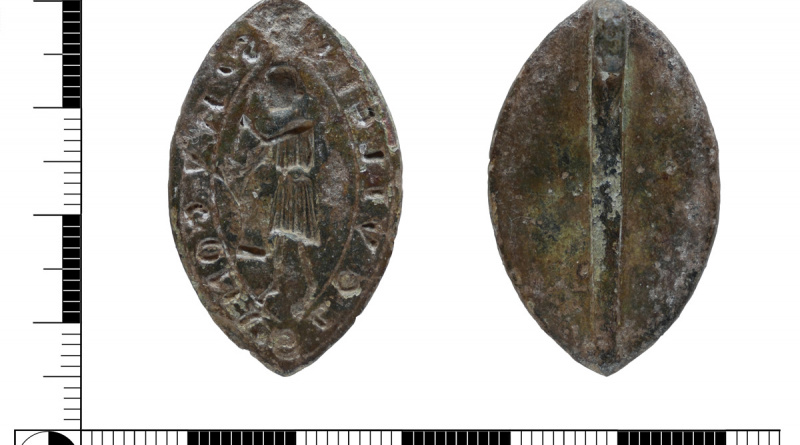Seal matrix of Hugo le Velein
This 13th century seal matrix depicts a man striking a coin. The inscription reads S’ hVGONIS LE VILEIN telling us that it is the seal of Hugo le Velein.
Recoinage of Henry III
The short cross penny was introduced by Henry II to replace the Tealby coinage in 1180. It remained largely unchanged during the subsequent reigns of Richard I and John and the first 31 years of the reign of Henry III. In 1247 he introduced the long cross penny where the cross extended to the edge of the coin. The idea was to try to reduce the problem of clipping. It also made it easier to cut the coins into halves or quarters.
The downside was that extended cross meant there was less room for the legend. Pairs, or sometimes trios, of letters would be ligated which makes reading the legend more difficult.
The number of mints had declined during the reign of Henry II but this new recoinage necessitated the opening of several new mints. These would all need new officials.
Shrewsbury Mint
On 10 October 1248 a writ was issued for the bailiffs and men of Shrewsbury to elect their officials. The results of this election were recorded in the Lord Treasurer’s Remembrancer’s Memoranda Roll for 1248-9: “Richard Pride and Hugo Champenes, elected by the men of Shrewsbury to the office of moneyer, having taken the oath were admitted to that office; and Robert son of John, Lucas son of Walter, Hugo le Vilein, and John son of Roger the Tailor (Paumere), elected by the men of Shrewsbury to the office of Custodian of the dies, having taken the oath were admitted to that office“.
Therefore, Higo le Vilein was one of the four custodians of the dies for the Shrewsbury mint. It was only active during 1249-50 and so, because of its distinctive design, Hugo le Vilein may only have used this seal matrix during those years.

